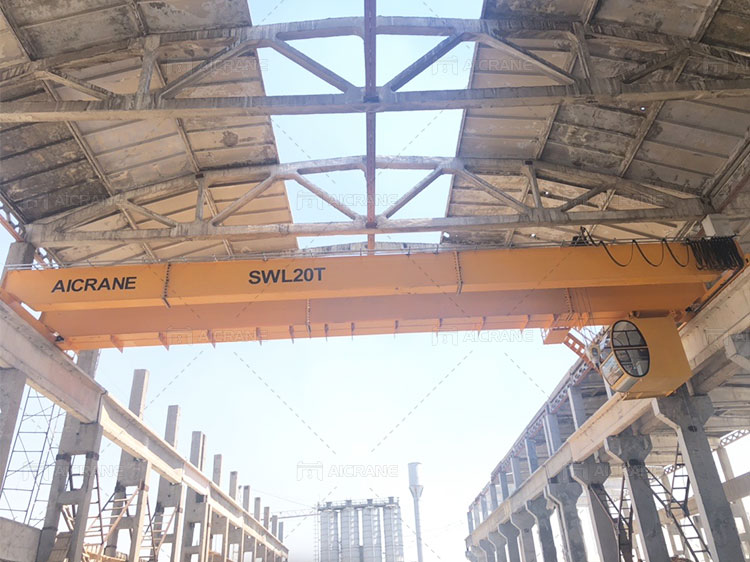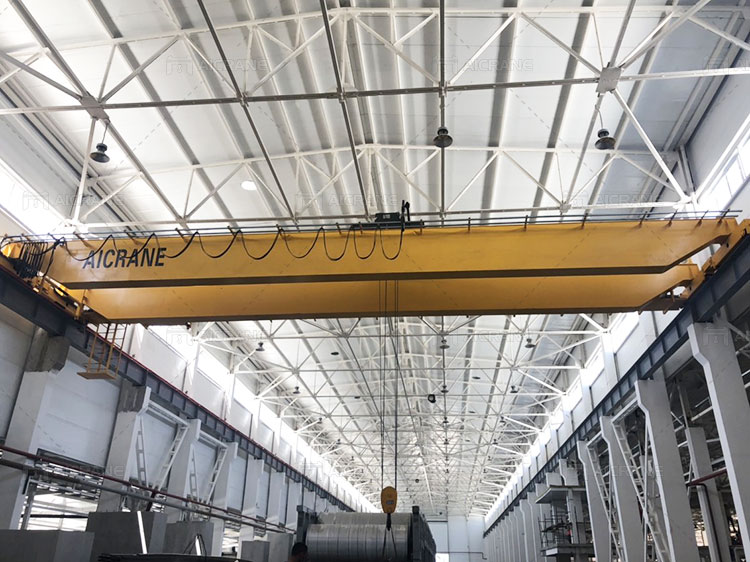Overhead cranes are essential in industries like manufacturing, warehousing, construction, and shipping. They provide a reliable solution for lifting and transporting heavy loads, significantly improving productivity. While overhead crane cost is a significant factor in selecting an overhead crane, choosing the cheapest option may lead to higher expenses in the long run. Understanding the hidden costs associated with cheaper overhead cranes can help businesses make a more informed decision.

1. Initial Cost vs. Lifetime Value
A cheaper overhead crane might save money upfront, but this short-term saving often comes at the expense of long-term reliability and performance. Lower-priced cranes are typically constructed with less durable materials or simpler designs, which may compromise their ability to handle frequent or heavy-duty operations over time.
Investing in a slightly more expensive crane with higher-quality components ensures better durability and a longer operational life, offering greater value over the equipment’s lifecycle.
2. Higher Maintenance and Repair Costs
Cheap overhead cranes often require frequent maintenance due to inferior components. Common issues may include:
- Faster wear and tear on gears, motors, and hoists.
- Poor quality welding leading to structural weaknesses.
- Malfunctioning control systems, creating safety risks and operational delays.
These frequent repairs increase downtime and maintenance expenses. In contrast, an overhead crane for sale with a robust design and high-quality components typically demands less frequent servicing, saving costs over time.
3. Reduced Efficiency and Productivity
Cheaper overhead cranes may lack advanced features like precision controls, anti-sway mechanisms, or smart monitoring systems. This absence can:
- Slow down operations, leading to lower throughput.
- Increase the likelihood of errors, such as load misalignment.
- Require additional manpower for tasks that more advanced cranes could automate.
Over time, the lost productivity can significantly impact the company’s bottom line, far outweighing the initial savings from purchasing a cheaper crane.
4. Safety Risks and Associated Costs
Safety is non-negotiable when operating overhead cranes. Cheaper cranes often have lower safety standards due to:
- Subpar construction materials.
- Inadequate overload protection mechanisms.
- Limited adherence to international safety certifications.
These shortcomings can lead to accidents, resulting in potential injuries, lawsuits, and reputational damage. Furthermore, businesses may face penalties from regulatory authorities if the crane fails to meet safety compliance standards. Investing in a high-quality crane ensures better safety features, reducing these risks.
5. Shorter Lifespan
The operational lifespan of an overhead crane directly correlates with the quality of its construction and components. Cheaper cranes often have a significantly shorter lifespan, necessitating replacement or extensive refurbishment sooner than expected.
For example:
- A low-cost crane might last 5–10 years with frequent breakdowns.
- A premium-quality crane can last 20 years or more with minimal issues.
Replacing a crane earlier than anticipated can disrupt operations and lead to unplanned expenditures, undermining the perceived cost savings of the initial purchase.

6. Limited Customization and Scalability
Cheaper overhead cranes are often built to generic specifications, limiting their ability to adapt to specific operational needs. Businesses requiring customization, such as specialized lifting capacities or enhanced mobility, may find cheaper cranes inadequate.
Additionally, as businesses grow and their operational demands evolve, the lack of scalability in a low-cost crane may necessitate the purchase of new equipment, further increasing costs.
7. Energy Efficiency and Operational Costs
Energy consumption is another factor where cheaper cranes often fall short. Low-cost models typically use outdated motors and control systems, resulting in higher energy consumption during operation. Over the crane’s lifetime, these additional energy costs can amount to a significant expense.
Modern, higher-quality cranes often come equipped with energy-efficient motors and regenerative braking systems that reduce operational costs, offering substantial savings over time. To learn more about high quliaty crane and services, visit the website: https://aicraneliftingsolution.com/
8. Limited Warranty and After-Sales Support
Manufacturers of cheaper cranes may offer limited warranties and subpar after-sales support. In the event of a breakdown, businesses might struggle to obtain replacement parts or technical assistance promptly, resulting in prolonged downtime.
Reputable crane manufacturers typically provide:
- Comprehensive warranties.
- Prompt technical support.
- Readily available spare parts.
These services ensure minimal disruption to operations and a better return on investment.
9. Impact on Business Reputation
Operational inefficiencies and safety issues caused by a substandard crane can harm a business’s reputation. Clients may lose trust in a company that cannot consistently meet deadlines or ensure workplace safety. A well-built, reliable crane reflects a commitment to quality and professionalism, enhancing the eot crane company image in the industry.
10. Financial Perspective: Total Cost of Ownership (TCO)
When evaluating overhead cranes, the total cost of ownership (TCO) provides a clearer picture of the true financial implications. TCO considers not just the purchase price but also factors like:
- Installation costs.
- Maintenance and repair expenses.
- Downtime costs.
- Energy consumption.
- Replacement or upgrade costs.
A low upfront cost may result in a disproportionately high TCO, negating any initial savings. A detailed TCO analysis can help businesses make a cost-effective decision.
How to Make the Right Choice
To avoid the pitfalls of cheaper overhead cranes, businesses should consider:
- Manufacturer Reputation: Choose reputable manufacturers known for producing high-quality, durable cranes.
- Customization Options: Select cranes tailored to specific operational needs to maximize efficiency.
- Compliance Standards: Ensure the crane meets industry safety and quality standards.
- Long-Term Warranty: Opt for manufacturers offering comprehensive warranties and robust after-sales support.
- Energy Efficiency: Look for cranes equipped with modern, energy-saving technologies.
Conclusion
While cheaper overhead cranes may seem like an attractive option initially, they often entail hidden costs that can far exceed the initial savings. Frequent repairs, higher energy consumption, reduced productivity, safety risks, and shorter lifespans can turn a seemingly affordable crane into a costly liability.
Investing in a high-quality overhead crane from a trusted manufacturer may require a higher upfront investment, but it provides long-term reliability, safety, and cost efficiency. By prioritizing quality over price, businesses can ensure seamless operations, better productivity, and a lower total cost of ownership, ultimately safeguarding their bottom line.
